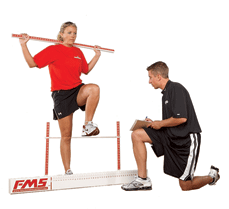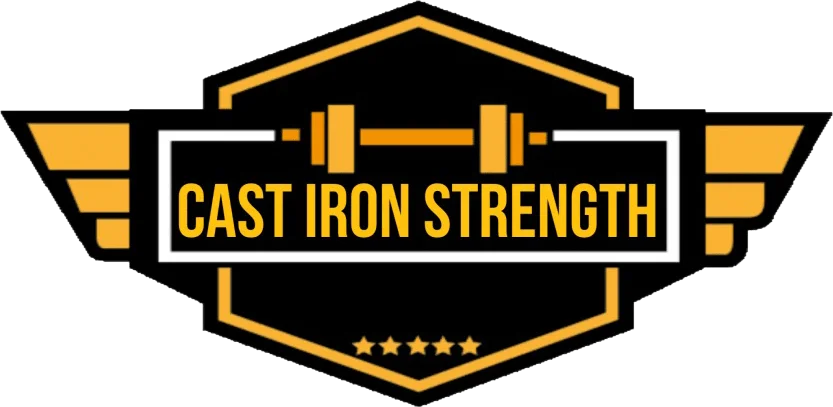
Does the functional movement screen predict injury? (in coast guard cadets)
Joseph Knapik et al looked at the predictive power of the 7 functional movment screen tests using a 1045 coast guard cadet sample (770 men and 275 females). All participants performed the FMS test before engaging in the 8 week intensive physical training course (Summer warfare annual basic training).
FMS Score showed a moderate accuracy for predicting injury in women and showed a low accuracy in predicting injury in men. The authors concluded that FMS screening holds limited promise for predicting injury.
It is interesting to note that the study showed a moderate predictive capability for the female cohort which is 35% the size of the male cohort. This is probably likely down to the size of the population and not the difference in sex and injury profile.
If all sports science studies had cohorts of 700+ participants I think we would find a lot of non significant findings.
TL;DR – Good study numbers for once. Functional movement screen is unlikely to predict injury occurrence.

Trap bar jumps, CMJ height and speed in professional rugby union players.
T.S. Turner et al looked at the relationship between relative peak power in a loaded trap bar jump (which has been shown in previous studies to be superior to squat jumps for peak power production at comparable loads) and counter movement jump height, 10m and 20m sprint times.
17 professional rugby union players took part in the study performed 10 and 20m sprints, 3 unloaded CMJs and 3 Trapbar squat jumps with a load predetermined to produce optimum peak power.
Trap bar jump squats showed a strong inverse relationship with 10 and 20 times i.e. as a player had a higher peak power output they showed a quicker sprint time (r=0.7 for 10m and r=0.75 for 20m) and a strong relationship with counter movement jump height (r=0.8).
Higher relative power means you jump higher and run faster…..
TL;DR – Study shows bleeding obvious.

Effect of various loads on force and power in high hang pull.
T.J. Suchomel looked at the effect of bar load on velocity, peak power and peak force during a high hand clean pull using 14 “athletic” participants. They looked at 30, 45, 65 and 80% RM
 They showed that as the load increased on the barbell peak force increase, peak velocity decreased and peak power decreased.
They showed that as the load increased on the barbell peak force increase, peak velocity decreased and peak power decreased.
Thanks for coming boys.
Velocity is the multiplier in the equation so if you want to produce a larger output it is better to have a bigger multiplier. If you want to produce power or display it you need to move things quickly.
TL;DR – Mathematics don’t need to be proved using a gym aware.

Dose response of 1, 3 and 5 sets of resistance on strength, muscular endurance and hypertrophy.
R. Randelli et al looked at the effect of 6 months of 3x per week training had one 48 novice men. They were split into 3 groups – 1 set of 5 group, 3 set of 5 group and 5 sets of 5 group. Their 5RM and 20RM where tested at baseline for bench press, lat pulldown, shoulder press and leg press before and after the 6 months of training. Their body composition, vertical jump ability and elbow flexor muscle thickness where also examined.
5 set group outperformed the other two groups significantly on all muscular strength, endurance and elbow extensor thickness.
3 set group outperformed one set group significantly on all muscular strength, endurance and elbow extensor thickness.
All groups improved body composition and vertical jump performance but not significantly over the others.
TL;DR – If you are a novice trainer looking to get stronger and bigger – 5×5 > 3×5 > 1×5
If your a novice athlete 1×5 might be enough to produce athletic improvement and a better body comp.

648 male Australian weightlifters filled in an online survey consisting of muscle appearance satisfaction scale, the body dysmorphic disorder questionnaire and the eating attitude test-26. 17% if the participants where in at risk or having muscle dysmorphia, 10.6% where at risk of having body dysmorphic disorder and 33.8% where at risk of having an eating disorder.
All of these “disorders” where counter related with each other. The authors of the study concluded that people working with men who train with free weights or machines to be mindful that this population may be at an increased risk of having some form of dysmorphia or an eating disorder.
TL;DR – people who lift weights and diet to change their appreance may have body image issues or strange eating habits…. SCIENCE!!!!

Knowledge of exercise prescription guidelines among certified exercise professionals
Z. Zenko et al looked at the general knowledge of 1,808 certified exercise professionals on the American college of sports medicine’s document entitled “Guidance for prescribing exercise”. All participants completed an 11 question survey that looked at exercise recommendation based off frequency, duration and intensity (% MHR, MET equivlent and RPE). Respondents had an average of 7.45 +/- 8.07 years experience.
On average participants answered 42% of the questions correctly. Gender, age, years of experience and number of certifications made no difference. Education made some difference with “some college” answering on average 39% correctly and doctorate level answering 47% correctly.
Job role showed a difference however no role exceeded 49% average. The authors concluded that there was room for improvement in knowledge of these guidelines.
TL;DR – Weekend certificates and years doing something don’t really make you any better at it.











